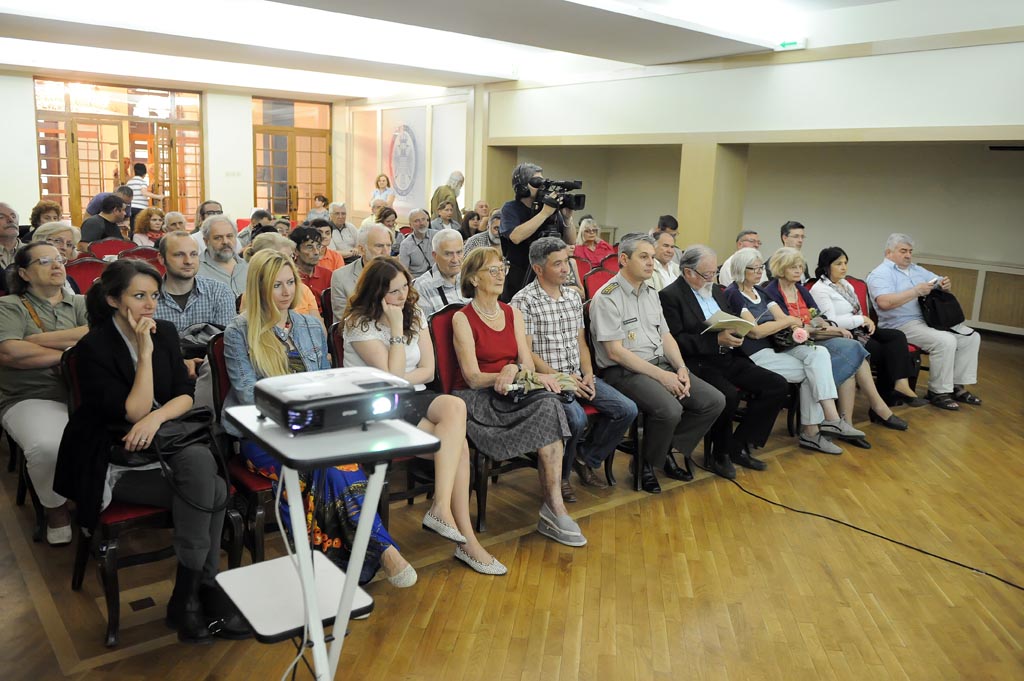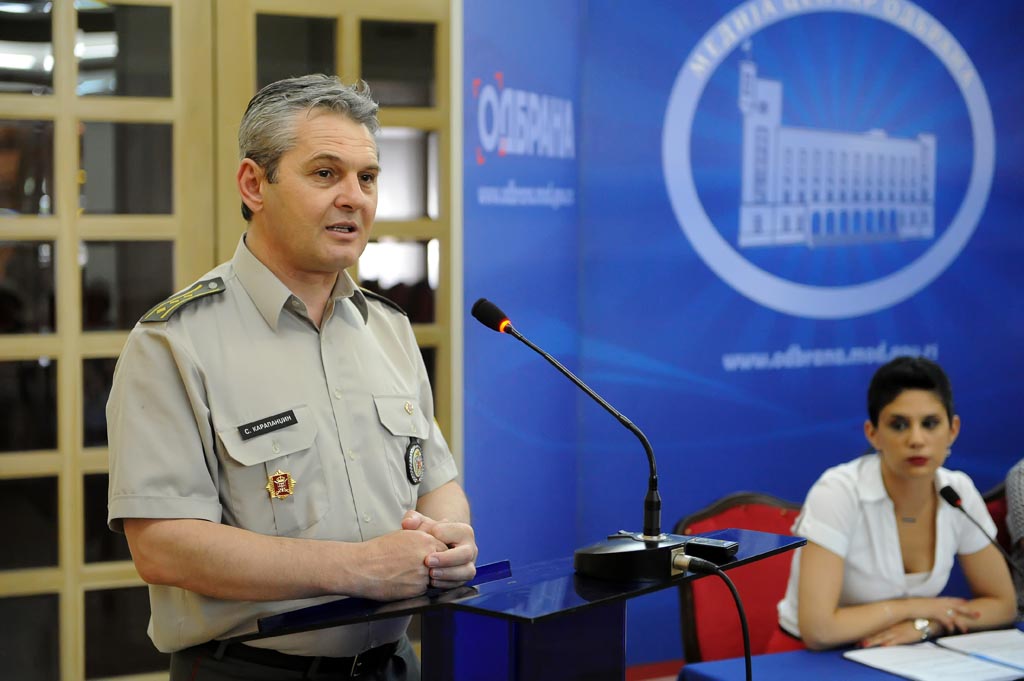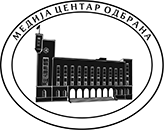04.06.2016
"Belgrade in the Great War" monograph promoted
 At the Atrium of the Central Military Club, yesterday, the monograph by Snezana Vicic "Belgrade in the Great War 1914-1918", published by Odbrana Media Centre and the "Vicić" studio. This book is of general encyclopaedic character and is dedicated to the Serbian capital during the First World War. At the promotion, the audience was addressed by Colonel S. Stevica Karapandzin, Director of Odbrana Media Centre; Mirjana Sandic, editor; Milan Terzic, PhD, reviewer of the book and author Snezana Vicic.
At the Atrium of the Central Military Club, yesterday, the monograph by Snezana Vicic "Belgrade in the Great War 1914-1918", published by Odbrana Media Centre and the "Vicić" studio. This book is of general encyclopaedic character and is dedicated to the Serbian capital during the First World War. At the promotion, the audience was addressed by Colonel S. Stevica Karapandzin, Director of Odbrana Media Centre; Mirjana Sandic, editor; Milan Terzic, PhD, reviewer of the book and author Snezana Vicic.Colonel Stevica Karapandzin pointed out that this work is one in a series of publications of Odbrana Media Centre, published for the purpose of marking the 100th anniversary of the Great War, but also for the purpose of combating the revisionism and rewriting history, as well as the attribution of guilt to Serbia as a cause for the First World War.
- One of our commitments is that we, as far as we can, make our contribution against revisionism, which has been continuously present regarding the causes of the First World War, ever since 1918. So we came up with the idea to publish a book about Belgrade in the Great War, in which the point is to present photographs and postcards. If we have dealt with this book more seriously, we would discover many interesting historical details.
Mirjana Sandic, editor of the publication said that this monograph presents a chronicle of an era, a frozen moment of a reality of life in Belgrade during the First World War.
 - The First World War began by bombing of Belgrade, which was occupied twice by the Austro-Hungarian Empire. Documentary evidence of the Serbian capital at this time is very scarce. During the First World War, war propaganda was very much present. Large-scale publicity campaign was reflected in the preparation of posters, postcards, maps, military insignia and symbols. The motifs on postcards spoke more than the private messages on postcards that soldiers sent to their families. A number of preserved postcards were published in this book and that is what distinguishes this work from others. More than 200 postcards of Belgrade from the First World War are published for the first time, or are less known. They are a part of the private collections of the family Vicic, Milos Grubisic, Military and Pedagogical Museum.
- The First World War began by bombing of Belgrade, which was occupied twice by the Austro-Hungarian Empire. Documentary evidence of the Serbian capital at this time is very scarce. During the First World War, war propaganda was very much present. Large-scale publicity campaign was reflected in the preparation of posters, postcards, maps, military insignia and symbols. The motifs on postcards spoke more than the private messages on postcards that soldiers sent to their families. A number of preserved postcards were published in this book and that is what distinguishes this work from others. More than 200 postcards of Belgrade from the First World War are published for the first time, or are less known. They are a part of the private collections of the family Vicic, Milos Grubisic, Military and Pedagogical Museum.Milan Terzic, PhD, the reviewer of the book, spoke about the valuable testimonies on how Belgrade bore the wounds from the Great War and about the values of family archives, family legacies and museum funds, mentioning some of the published photographs as examples.
- This book consists of five chapters. These are sections that are related to the Balkan wars, Austro-Hungarian attack, then the period of short-term occupation, the period of freedom, period of the second occupation from 1915 to 1918, and the period in 1918 when Belgrade was finally liberated. Essentially, we are talking about important historical documents, such as photographs, which eloquently speak about what happened to the Serbian capital city of Belgrade. Do you have pictures that speak more than those thick history books, which are usually read by experts, once spoke? The photos in the book talk mostly about the suffering of the population, the destruction of the city. We have a picture of St. Nicholas Church in Zemun, with the scars of war. Same is the case with the Ruzica church on Kelemegdan. We have the destroyed bridge on the Sava River, which was destroyed by the Serbian Army during the first Austro-Hungarian attack, not to be used for the purposes of the hostile army.
The author of the monograph, Snezana Vicic, talked to the participants about the inspiration from which this valuable work was born, for which the material in the form of pictures and postcards of the Serbian capital has been collected since 1977. The fund, which has about 17,000 copies, was made by a selection of photographs for the book, and at the promotion, the author spoke about some special photographs.
- One postcard is also interesting, made on the first day of the war – 28th June, with a lonely soldier on the Sava promenade. This wipes out the present tendency to commit revisionism over serious history. You cannot have a state attacking someone, and there is a picture of a soldier, lonely on the promenade, because mobilization had not been carried out yet, and the number of soldiers in Belgrade was as it was. On the first day of the war Belgrade defended itself alone; the citizens defend in the way as they organized themselves. The first shells started falling around noon. So this postcard and many other similar ones, is something that does not allow being at ease and seeks continuing the story of that time, to find out what happened and how it happened.
 PHOTOGALLERY
PHOTOGALLERY
